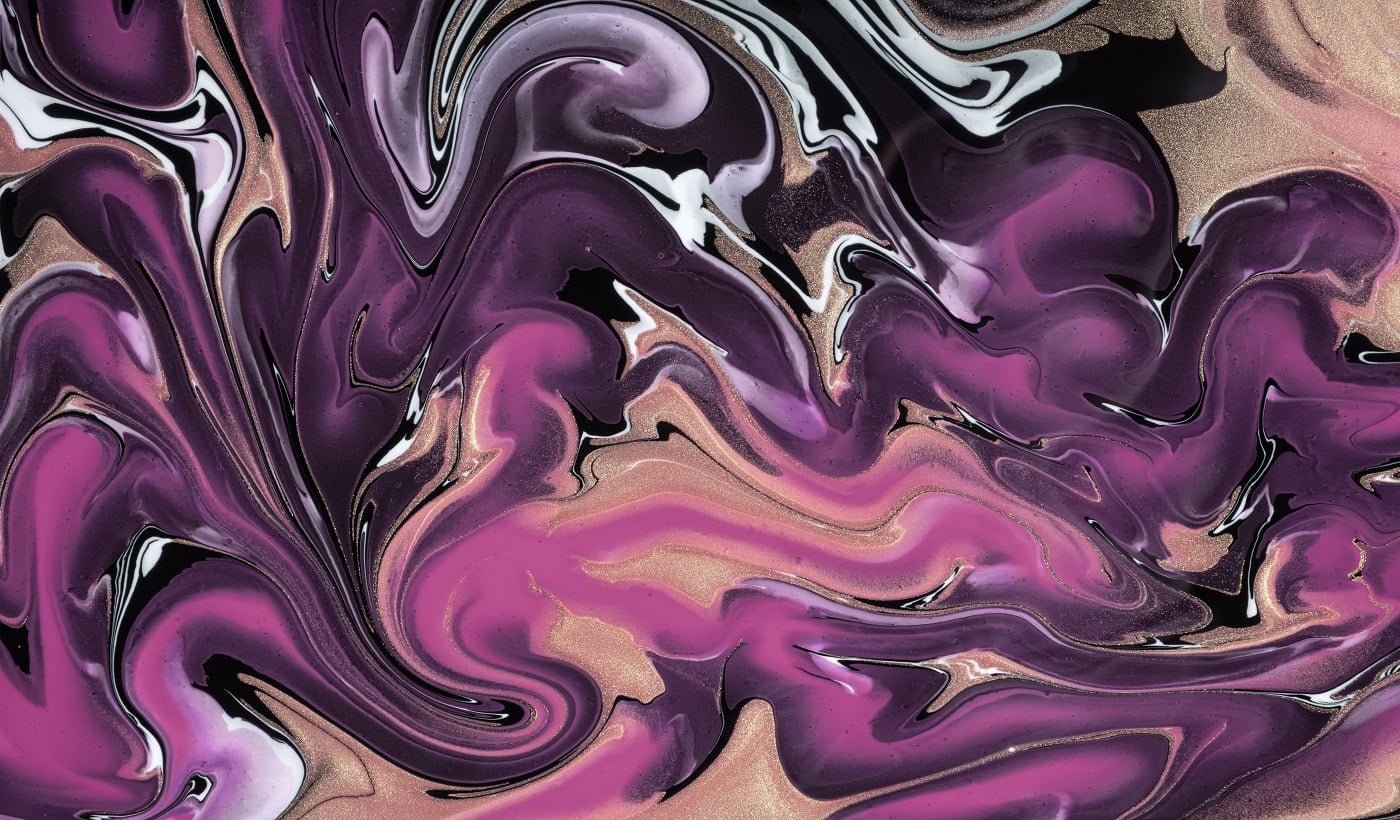Have you been thinking about using oil paints? If yes, then you must have come across various solvents.

The most common variants available on the market are the traditional paint thinners and mineral spirits. On the shelf, the bottles of both solvents look similar, and it can especially be confusing for a beginner to choose between the two.
Making the right choice is crucial to make a decision that would give you better results while applying the paint. As many people can be sensitive to these solvents, knowing about the products helps you to take better safety precautions.
Hence, we have come up with this informative guide to help you choose between paint thinners and mineral spirits. Moreover, we will take a look at each variant to see if they are really that different. And, don't forget to check our suggestions of ways to use the solvents.
So, without much ado, let's begin!
Paint Thinner Vs Mineral Spirits Differences

Before we get into the differences seen in the two solvents, it's important to look at an overview of each variant. This would give you a snapshot of what to expect from the solvents and to decide on the right choice for your task. So, let's have an in-depth look at both products.
What Is Paint Thinner?
When choosing a solvent, the most common option to come across is the paint thinner. It has been in use for a long time, and most of us recognize paint thinner because of its strong smell, which can be off-putting for many people.
This solvent used to be a go-to option for those when most paints used to have an oil base. However, paint thinners also work with acrylic paints and many other paints except latex-based products.
One of the things that you should know is that, like many other solvents, paint thinners are also a derivative of petroleum. Hence, it's highly flammable and toxic, so you should be extra careful while working with the substance.
From the very name of this product, you can understand that its primary use is to thin out paint, specifically oil-based variants. All you need to do is add the paint thinner in the right proportions to change the viscosity or thickness of the paint. And then, you can apply the thinned paint with a brush or use it for spray painting.
These thinners also work well to strip paint from a surface as well as to clean brushes. These can also be used as a cleaning medium for taking off grease and grime from metal tools or even sanded surfaces.
Compared to other solvents, paint thinners are less refined, containing a higher amount of volatile organic compounds (VOCs), such as methylene chloride, formaldehyde, and benzene. Thus, working in a well-ventilated space is always recommended while using a traditional paint thinner.
Furthermore, many people prefer to use paint thinners because of their low price, especially when bought in bulk. Having said that, these paint thinners aren't a good choice for those who are prone to skin irritation from chemical solvents.
What Are Mineral Spirits?
Mineral spirits are also widely available in the market and are sometimes sold under the name of white spirits. This solvent is also derived from petroleum, but it goes through an elaborate refining process to limit the amount of volatile organic compounds (VOCs).
Even though all mineral spirits aren't free from toxicity, some manufacturers produce variants that are safe for the environment. One of the critical differences between mineral spirits and the usual paint thinners is their reduced smell. In fact, many companies have been able to get rid of the smell completely, and those variants are sold under the label of being "odorless."
Many professionals these days prefer to use mineral spirits inside confined spaces and homes because of their low toxicity levels. However, you should still avoid long-term exposure to the product.
When it comes to the use of mineral spirits, it's similar to that of the traditional paint thinners and can be used for the same jobs. Apart from working as a thinner for paints, some variants of mineral spirits are more potent, so it's much more effective when used as a paint stripper or a cleaning agent.
Another excellent feature of the mineral spirits is the low evaporation rate. Hence, it elongates the usability period of the paint, giving you a little more time to get a smoother texture.
Nevertheless, mineral spirits do come at a higher price point compared to traditional paint thinners. As only a tiny amount is needed for any task, a bottle of it may last you a long time.
So, if you're looking for a solvent that doesn't smell bad, and would work for indoor spaces, then you may think about opting for mineral spirits.

Differences Between Paint Thinners And Mineral Spirits
Are you a little confused about the differences between the two solvents? Let's have a detailed look at the contrasting points present between paint thinners and mineral spirits. While getting a solvent for your task, make sure to keep these points in mind to choose a product that will work according to your expectations.
-
Presence Of Volatile Organic Compounds (VOCs)
One of the first things to know about both solvents is the presence of volatile organic compounds (VOCs). These are predominant compounds present in petroleum-based products, and they are emitted from the solvents in a gaseous form. And prolonged exposure to toxic fumes can lead to health problems.
Moreover, the effect of these compounds is especially felt in an indoor environment as there isn't a way for the gas to escape. And, these toxic organic compounds are commonly found in all kinds of paint thinners and even paints. So, it's always advisable to wear proper safety gear while working with these substances.
To be honest, both solvents have volatile organic compounds (VOCs), but the traditional paint thinners contain a greater amount compared to mineral spirits. Also, some manufacturers of mineral spirits have refined the solvent even further to bring VOCs down to the minimal level.
Because these compounds give rise to pollution, it's advised to choose a solvent that's safer for the environment. Hence, the mineral spirits do have the upper hand, especially when you are going to use the solvent in an enclosed space.
If it's your first time buying a solvent, check the label present on the bottle to see its toxicity warnings. Furthermore, make sure to see if the solvent is suitable for indoor tasks.

-
Composition
As both solvents are used to thin paints, they can sometimes be mislabeled as just paint thinners. However, looking at the composition of a solvent can give you a clue about its differences.
If you are searching for mineral spirits, make sure to have a look at the bottle to see that it contains 100% unblended mineral or white spirits. This solvent is usually colorless and almost odorless because of going through a rigorous filtration process.
In comparison, the usual paint thinners have a blended composition and may even contain additives. It may include compounds like blended mineral spirits, turpentine, naphtha, acetone, or other substances that can thin out the paint.
Moreover, paint thinners are also known for containing a certain level of benzene which can help to mask the smell and allow the substance to produce a smoother mix with paints.
Interestingly, some paint thinners are entirely made of turpentine, an oil derived from pine trees. But, most people steer clear of using it because of the strong smell, which is retained for a longer time.
Knowing the composition of a solvent is also quite crucial to use it for the right job. One point of similarity present in mineral spirits and paint thinners is the inability to work with latex-based paints. Other than that, mineral oils are thought to be a more versatile substance, but you should still have a look at the packaging to find out its compatibility with your project.
-
Odor
Most people will agree that an off-putting thing about most solvents and paints is the obnoxious odor. This is especially true for those who are sensitive to strong smells, and working with such substances can lead to adverse effects on their health.
Additionally, when a solvent is being used for an indoor project, the smell may last for a while. Hence, anyone using the space may feel the woes of the odor released by the substances.
In the aspect of odors, mineral spirits are our first preference as most of them are low odor variants. And, some manufacturers have even gone forward and come up with completely odorless mineral spirits. So, if you're averse to the strong smell of traditional paint thinners, go for mineral spirits.
However, if you are going to choose the usual paint thinner, try to find a low-smelling variant. Besides, while working with a smelly paint thinner, always wear a mask to protect yourself from the toxic fumes.
-
Effectiveness
As a solvent can be used for different purposes, you should definitely check its level of effectiveness before making a decision. You will notice that there's a raging debate between people who prefer to use traditional paint thinners and those who use mineral spirits.
The best way to check the effectiveness of a product is by testing it out, but that's not always possible. Hence, it's necessary to check out the previous reviews to ensure that the solvent will work for your task.
Now, a solvent that works well while thinning paint may not be the best substance for cleaning metal tools. So, before purchasing, find out the use case for the particular solvent.
After going through the opinion of professionals, we concluded that mineral spirits are more versatile and effective. Additionally, pure mineral spirits are an excellent cleaning agent that can even get rid of sticky adhesives.
And, the best part about using mineral spirits is the smooth texture that it renders to paint. If you are working with expensive paint, it's always better to opt for mineral spirits.
Having said that, for certain materials, the usual paint thinners might be the most effective option. In such a situation, you may need to choose the paint thinner over the mineral spirits.

-
Cost
Even though we should judge a product by its quality, most of us end up basing it on the cost. And, the usual paint thinner is one of the cheapest solvents available on the market. Hence, many people gravitate towards getting it but do think about the other factors before making a final decision.
Although mineral spirits are a tad more expensive, we do think that they can be a great investment, one of the crucial points being the safety that comes with them. Moreover, there are areas where paint thinners having a high VOC content are banned.
The pure or white mineral spirits can at times cost 40-50% more than traditional paint thinners. As they also tend to be more effective for any work, we think that it can be an excellent investment. Those who are working on a bigger project can always get the bulk packs to cut down on the cost.
Additionally, if you are working with home improvement contractors, make sure that they are using healthy and safe products. And, if the work deals with an indoor area, the best choice is to go for the mineral spirits because it comes with less toxicity.
Usages Of Paint Thinner And Mineral Spirits
A common confusion among people is about the use case of mineral spirits and paint thinners. Even though we have stated that the substances are somewhat different, one of the points of similarity has to be their usage. The most basic use of both substances is to thin out paint, usually oil-based and alkyd-based paints.
Apart from the paints used for home improvement, paint thinners are also used by artists while painting. And, you may have seen them being used to cleaning wet paint brushes because of their ability to strip paint.
However, contrary to popular beliefs, neither solvents can remove dried paint from paint brushes. Additionally, if you have spilled paint on any surface, you can quickly clear up the mess with the solvents.
Surprisingly, paint thinners and mineral oils are also used to rub off the waxy substance present on the wood. And, the solvents can clear any adhesive. We especially like how mineral spirits work as it isn't sticky so that you can control it easily.
Another common utilization for these solvents is as a cleaning agent. It's commonly used for car parts and auto equipment that are covered in grease.
Furthermore, odorless mineral spirits can be used around the house for various purposes. When your furniture is dirty, take a tiny amount of mineral spirits to remove all the dirt. And, you can even use it on the floor for a quick clean-up. For getting these uses, try to get mineral spirits that are non-reactive and always patch test on the surface before proceeding to do the whole job.
Also, when you're using mineral spirits for cleaning, it's necessary to clean up the area after that to avoid accidents due to its flammability.

Safety Measures For Using Paint Thinner And Mineral Spirits
By now, it must be clear to you that maintaining safety is crucial while using any kind of solvent. Hence, we thought of telling you about some safety precautions that must be followed while using paint thinners and mineral spirits.
First, it's a must to wear a mask to avoid the foul odor and the toxic VOCs that come out of these solvents. Rather than using a thin mask, try to wear a respirator to have better protection.
Moreover, every solvent comes with a safety data sheet that gives you all the precautions. If you are new to using solvents, it's a prerequisite to go through the material to understand how the toxic substance can be harmful.
Common symptoms after inhaling a chemical like benzene is dizziness, difficulty breathing, and nausea. The probability of facing such a situation arises when you work with paint thinner in a confined space.
Another point to remember while working with paint thinners and mineral spirits is to wear well-fitted gloves. As these substances are irritants and toxic, you don't want to ingest them. And, you should also ensure to wear clothes that cover most of your body.
If you feel that your skin has come in contact with the solvents, immediately stop working and proceed to wash the area with soapy water. If there is a sign of irritation, visit an emergency practitioner as soon as possible.
However, the most crucial safety issue with these solvents is their flammability. Even a tiny spark can quickly lead to a big fire, so the work area should be away from any source of heat or exposed flames. Also, be careful not to let anyone smoke around the area to avoid accidental fires.

Paint Thinner Vs Mineral Spirits FAQ
1. Is Paint Thinner Same As Acetone?
Even though both acetone and paint thinner are commonly used solvents, they aren't the same thing. Acetone is a more specific term used to describe a chemical solvent usually derived from propanone. Whereas paint thinners may be composed of various solvents.
One of the most familiar uses of acetone is to remove nail paint because of its paint stripping capacities. Other than that, acetone is also used in places like the metal industry. In comparison, paint thinners often have limited use of thinning paints and for cleaning surfaces.
2. Can I Pour Mineral Spirits Down The Drain?
No, as it’s a safety hazard, pouring mineral spirits down the drain is never okay. It can cause damage to the sewers, and there's also a high probability of it leaching into the environment, significantly contaminating the groundwater. As it's a highly flammable substance, you need to be very careful about its disposal, or else it can pose a threat to people who come close to it.
The best way to discard unused mineral spirits is by calling up your hazardous-waste recycler or landfill. They will tell you the steps to follow before discarding the solvent so that it doesn't harm anyone or the environment.
3. Is Baby Oil The Same As Mineral Spirits?
One of the common mistakes people make is to get confused between mineral spirits and mineral oils. The latter is the substance that you usually find in baby oils. Even though both products are derived from petroleum, the mineral spirits are toxic and odorous, while mineral oils are colorless and odorless.
Apart from being used in the beauty and skincare industry, mineral oils are widely used for finishing wood and easing constipation. In comparison, mineral spirits are primarily used for thinning out paint or cleaning various surfaces and stripping paint from brushes.
4. What Is The Difference Between Paint Medium And Paint Thinner?
If you're about to work with acrylic paints, it's essential to know the difference between a painting medium and a paint thinner. While a paint thinner is mainly used to reduce the thickness of paint, a painting medium adds texture to it.
It's common to see a medium categorized by a glossy or a matte finish that will render to the paint. However, a thinner will help to thin out the paint to make applying it easier. Paint thinners are also helpful in airbrush or spray paintings as it makes the color slightly transparent without changing the properties of the paint.
5. Are Mineral Spirits And Paint Thinner The Same?
The mineral spirits and paint thinners are quite alike to each other and used for similar tasks. But, the mineral spirits are usually more refined than paint thinners, making them almost odorless and less toxic. And, it hikes up the prices of mineral spirits and is often used in more sophisticated projects in contrast to paint thinners.

Verdict
We have come to the very end of comparing the paint thinner with the mineral spirits, and we're sure you're excited to know the winner among the two. However, declaring a winner isn't easy, as both solvents have their individual pros and cons.
Moreover, even the professionals who regularly work with solvents opine that both variants work quite similarly. But, some think that the mineral spirits are a bit more effective than usual paint thinners.
Besides, if you're sensitive to the strong odor of regular paint thinners, then mineral spirits would definitely be a better choice.
However, for those who want to save a little more money and have the means to follow all safety precautions, you may opt for the paint thinners. Also, do let us know if there are any queries regarding the two solvents.
Till then, goodbye and take care!
Related Articles
Best Acrylic Paint Brushes for Artists & Students Reviewed
Is Paint Flammable? Types of Paints That Combust and Don’t
How to Remove Spray Paint from Concrete
How To Thin Latex Paint For A Wagner Spray Gun
Learn How To Soften A Hard Paint Brush
13 Best Epoxy Spray Paint Resins To Consider Today
13 Best Acrylic Paints for Beginners & Professionals Reviewed
11 Best Palettes for Oil Painting Reviewed
